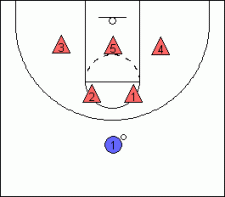
2-3 Zone Defense
Image: breakthroughbasketball.com
Mike Fehrenbacher spent nearly 14 years as chief executive officer of MidWest Funding Bancorp, a mortgage banker, broker, and title enterprise. Since 2012 he has worked as an independent mortgage wholesale lending contractor in Batavia, Illinois. Outside of work, Mike Fehrenbacher enjoys staying active by playing basketball.
In the sport of basketball, teams can embrace a number of defensive schemes, including various zone defenses. Zone defenses are often valued by slower, less athletic teams with defenders more adept at guarding an area of the court than an individual player. The 2-3 zone is one of the most popular zone defenses in use today.
Under the 2-3 zone, a team’s two largest players split up the interior of the court, preventing opponents from making easy drives to the basket and setting up opportune rebounding scenarios. The team’s three best perimeter defenders, meanwhile, are stationed at the top of the key and on the wing. A relatively balanced defense, the 2-3 zone can be rendered ineffective by a team of skilled passers and shooters, as the two or three perimeter defenders can struggle to cover four or even five shooters.
Teams with exceptionally long or otherwise athletically gifted athletes may be able to overcome this deficiency. Rather than using the 2-3 zone to make up for a lack of speed or strength, the zone can be used to trap opponents, generating steals and other turnovers. Other common zone defenses include the 1-3-1 and the point zone defense.